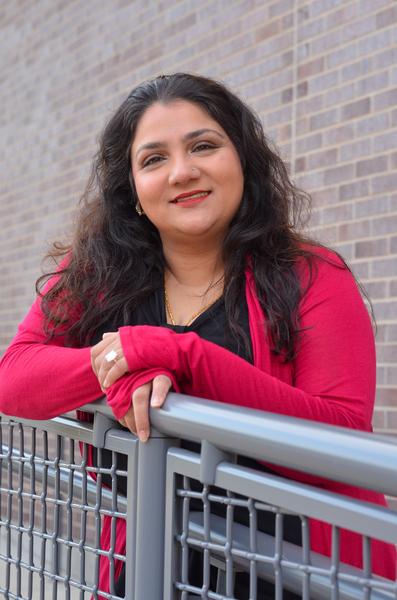


I have been an engaged community member and a Linn-Mar volunteer for 14 years. I am a parent of a Linn-Mar graduate, and in my life away from Linn-Mar, I am a Financial Analyst at Collins Aerospace
I have been serving on the School Board for the last year.
Linn-Mar is known to be a destination district. My family and I chose it to call home fourteen years ago. Our strong curriculum, extracurricular participation, dedicated staff, and strong community support define us. But pride isn't enough; we need a board that looks honestly at the data and works side by side with the community for future planning and continuous improvement.
With my background in leadership and finance, I bring experience in building relationships, managing resources, and making data-driven decisions. I will keep asking the tough questions and will make sure our dollars go where they have the most impact, listen to our staff, parents, Linn-Mar community, and continue building partnerships that connect our students to the workforce and the world.
This work is about uniting around shared goals
- student success
- teacher support
- fiscal stewardship
Prior to my appointment to the school board last year, I had been attending the school board meetings regularly for 3 years. Since being on the board, I have only missed one meeting because I was out of the country
1. Academic Excellence & Student Success – Provide every student with high-quality instruction and the support they need to thrive in academics, activities, and wellbeing.
2. Support for Teachers & Staff – Retain and empower our educators by ensuring they have the resources, training, and respect to do their best work.
3. Strong Partnerships with Families & Community – Actively listen to parents and community members, ensuring their voices help guide decisions while maintaining responsible stewardship of district resources.
Strengths:
• Linn-Mar’s dedicated volunteers — parents, families, and community members — are the district’s greatest strength, giving their time and energy to support classrooms, activities, and student success.
• We have talented teachers and staff who are committed to helping every student thrive.
• Recent investments in facilities have expanded opportunities in the arts, athletics, and academics.
Weaknesses/Challenges:
• With enrollment leveling off, the district must focus on sustainability and wise use of resources.
• There is a need for stronger communication and trust-building with parents and the community.
• Recruiting and retaining staff remains a challenge in today’s competitive environment. We must be committed to our staff to recruit and retain the best.
If budget cuts were required, I would start by looking for efficiencies outside the classroom — such as streamlining operations, reviewing contracts, reducing waste, and finding savings through technology or energy use. My goal would be to protect students, teachers, and core learning experiences while ensuring taxpayer dollars are spent wisely. Any changes should be guided by transparency and community input.
Yes, I support the district’s facilities master plan. As a member of the Linn-Mar Facilities Committee, I’ve been closely involved in the planning process and understand the importance of aligning our infrastructure with the evolving needs of our students and staff.
The plan reflects a proactive approach to addressing capacity, equity, and modernization across our schools. I strongly support:
Equitable upgrades that ensure all students have access to safe, high-quality learning environments.
Flexible and future-ready spaces that support collaboration, technology integration, and diverse learning styles.
Security enhancements that prioritize the safety of our students and staff.
To ensure the plan is grounded in accurate data and long-term sustainability, we’ve issued two key RFPs: one for a demographer to analyze enrollment trends and community growth, and another for a facilities assessor to evaluate the condition of our buildings. These assessments will help us make informed decisions and ensure the master plan is both strategic and fiscally responsible.
While I support the overall direction, I believe it’s essential to maintain transparency with the community and remain flexible as new data emerges. Our goal is to build a facilities plan that reflects both current realities and future aspirations, continually evolving to meet the needs of the district.
Yes, I believe curriculum should be continuously evaluated to ensure it meets the needs of all students—academically, socially, and emotionally. One concern I’ve heard from families and educators is the need for greater transparency and community engagement in curriculum decisions. Parents want to understand what their children are learning and how it aligns with state standards, college readiness, and real-world skills.
Another area of focus is ensuring our curriculum reflects diverse perspectives and prepares students to thrive in a global society. That means integrating critical thinking, digital literacy, and inclusive content across subjects.
The school board should address these concerns by:
Strengthening communication between the district and families about curriculum goals, changes, and resources.
Supporting professional development for teachers to implement best practices and adapt to evolving standards.
Encouraging community input through curriculum review committees that include parents, educators, and students.
Monitoring outcomes to ensure our curriculum is driving academic growth and preparing students for post-secondary success.
Curriculum is not static—it should evolve with our students, our community, and the world they’re preparing to enter.
Responsiveness begins with active listening. As a school board member, I will prioritize open, respectful dialogue with parents, teachers, and district staff. I believe every stakeholder deserves to feel heard and valued, especially when it comes to decisions that impact our students and schools.
The public can expect:
Consistent communication through email updates from the district, Linn-Mar CSD social media, and community forums to keep families informed and engaged.
Availability and approachability—I plan on volunteering at our different school buildings and attending school and community-sponsored events. I will engage with staff and students during my volunteer and school visits, and engage with the community at events, as well as before and after board meetings.
I will provide timely responses to questions and concerns, with a commitment to follow through and transparency.
Collaboration with district staff to understand challenges and support solutions that improve teaching and learning.
I also believe in proactive outreach—not just waiting for concerns to come in, but actively seeking input from underrepresented voices and building trust across the district. My goal is to be a bridge between the board and the community, ensuring that decisions reflect the values and needs of those we serve.
Absolutely — student and teacher safety must be a top priority, and I believe the district can take meaningful steps to improve it. Safety isn’t just about physical security; it’s also about emotional well-being, trust, and preparedness.
Here’s what I would advocate for:
Mental health support: Expand access to school counselors and social workers. Early intervention can prevent crises and foster a safer, more supportive environment for everyone.
Clear communication protocols: Ensure every school has a well-practiced emergency response plan — not just for active threats, but also for medical emergencies, severe weather, and mental health incidents. Teachers and staff should feel confident in what to do and who to contact.
Building security upgrades: Evaluate entrances, exits, and surveillance systems to ensure schools are secure without feeling like fortresses. Safety should be seamless, not intimidating.
Professional development: Provide regular training for teachers and staff on de-escalation techniques, trauma-informed practices, and recognizing early warning signs of distress in students.
Community partnerships: Work with local law enforcement, mental health providers, and nonprofits to build a network of support around each school.
Safety isn’t a one-size-fits-all issue. It requires listening, adapting, and acting with compassion. As a school board member, I’m committed to making sure every student and teacher feels protected, respected, and empowered.
